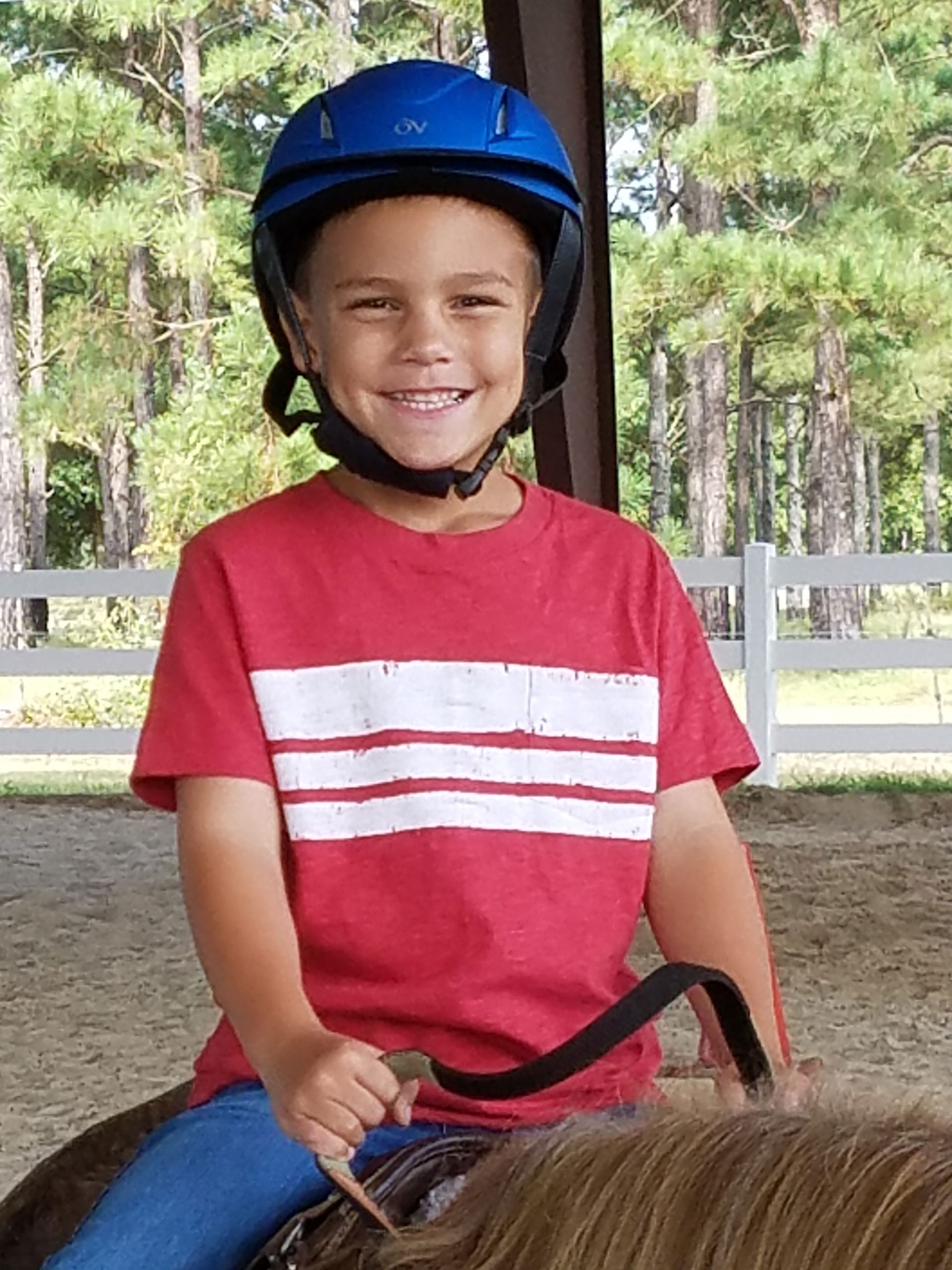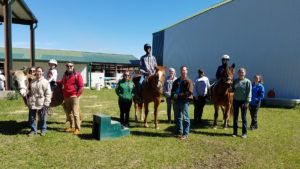Benefits
Throughout the world, horseback riding is considered a uniquely beneficial form of therapy. A horse’s gait, similar to the human walk, helps strengthen spine and pelvic muscles, improves posture and coordination, and increases joint mobility. Along with physical therapeutic benefits, horseback riding gives people a feeling of control, a sense of accomplishment and increased self-esteem. Therapeutic Riding, also known as Equine Assisted Therapy, Equine Facilitated Therapy, and Riding for the Disabled, is the use of horse and equine-oriented activities to achieve a variety of therapeutic goals, including cognitive, physical, emotional, social, educational, and behavioral goals.
Horseback riding for the disabled is recognized as one of the more progressive forms of therapy. The ability to control a horse as well as one’s own body inspires self-confidence, responsibility and teamwork. Best of all, it is a thoroughly enjoyable experience, which creates a special relationship between rider and horse and promotes personal challenge. From the beginning, riders learn balance, coordination and self-assurance while receiving therapeutic muscle stimulation. As a result of lessons, poise, posture, strength and flexibility improve. Classes, horse shows and events encourage self-confidence and a sense of accomplishment as new levels of expertise and self challenges are met.

Physical Benefits:
Stretching of tight or spastic muscles
Decreased spasticity
Increased range of motion of the joints
Reduction of abnormal movement patterns
Improved respiration and circulation
Improved appetite and digestion
Sensory integration
Psychological Benefits:
Improved self-confidence
Increased interest in the outside world
Increased interest in one’s own life
Development of patience
Emotional control and self-discipline
Sense of normality
Expansion of the focus of control
Social Benefits:
Friendship
Increased experiences
Enjoyment

Educational Benefits:
Remedial Reading
Remedial Math
Sequencing, patterning and motor planning
Improved eye-hand coordination
Visual spatial perception
Differentiation
